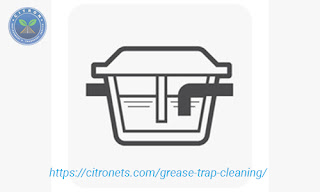What are the Maintenance Requirements for a Grease Trap?
Certainly! Proper maintenance and cleaning of a grease trap is crucial to ensure its effective functioning and to avoid potential issues. Here are the key maintenance requirements for a grease trap:
Regular Inspection: Periodically inspect the grease trap to identify any signs of damage, wear, or corrosion. Catching issues early can prevent more extensive and costly repairs later on.
Scheduled Cleaning: Grease traps need regular cleaning to remove accumulated fats, oils, and grease (FOG). The frequency of cleaning depends on the size of the trap and the volume of grease it handles. For smaller traps, monthly cleaning may suffice, while larger traps may require more frequent cleaning.
Scraping and Removal of Solids: In addition to FOG, solids can accumulate in the grease trap. Ensure that solid waste is scraped off and removed during each cleaning session. This prevents blockages and ensures efficient operation.
Use of Enzyme Cleaners: Consider using enzyme-based cleaners that help break down grease and organic matter. These cleaners can be added regularly to maintain the trap and improve its performance.
Professional Maintenance Services: While some maintenance tasks can be done by in-house staff, it's advisable to enlist professional grease trap cleaning services at regular intervals. Professionals have the expertise and equipment to perform thorough cleaning and ensure the trap is functioning optimally.
Proper Disposal of Waste: Dispose of the waste removed from the grease trap according to local regulations. This may involve recycling or proper disposal at approved facilities. It's essential to adhere to environmental guidelines.
Inspection of Inlet and Outlet Pipes: Regularly check the inlet and outlet pipes connected to the grease trap for any signs of leaks or blockages. Addressing issues promptly prevents damage to the trap and surrounding plumbing.
Maintaining Proper Water Flow: Ensure that water flows smoothly through the grease trap. Slow drainage could indicate a clog or a full trap. Address any drainage issues promptly to avoid backups in the plumbing system.
Record Keeping: Maintain a log of maintenance activities, including cleaning dates, repairs, and inspections. This record can be valuable for compliance with local regulations and for tracking the performance of the grease trap over time.
Educating Staff: If the grease trap is in a commercial setting, educate kitchen staff about the proper disposal of grease and solid waste. Avoid pouring excessive oil or food particles down the drains to prevent unnecessary strain on the grease trap.
By adhering to these maintenance requirements, you can extend the lifespan of the grease trap, prevent plumbing issues, and contribute to a cleaner and more efficient wastewater disposal system.




Comments
Post a Comment